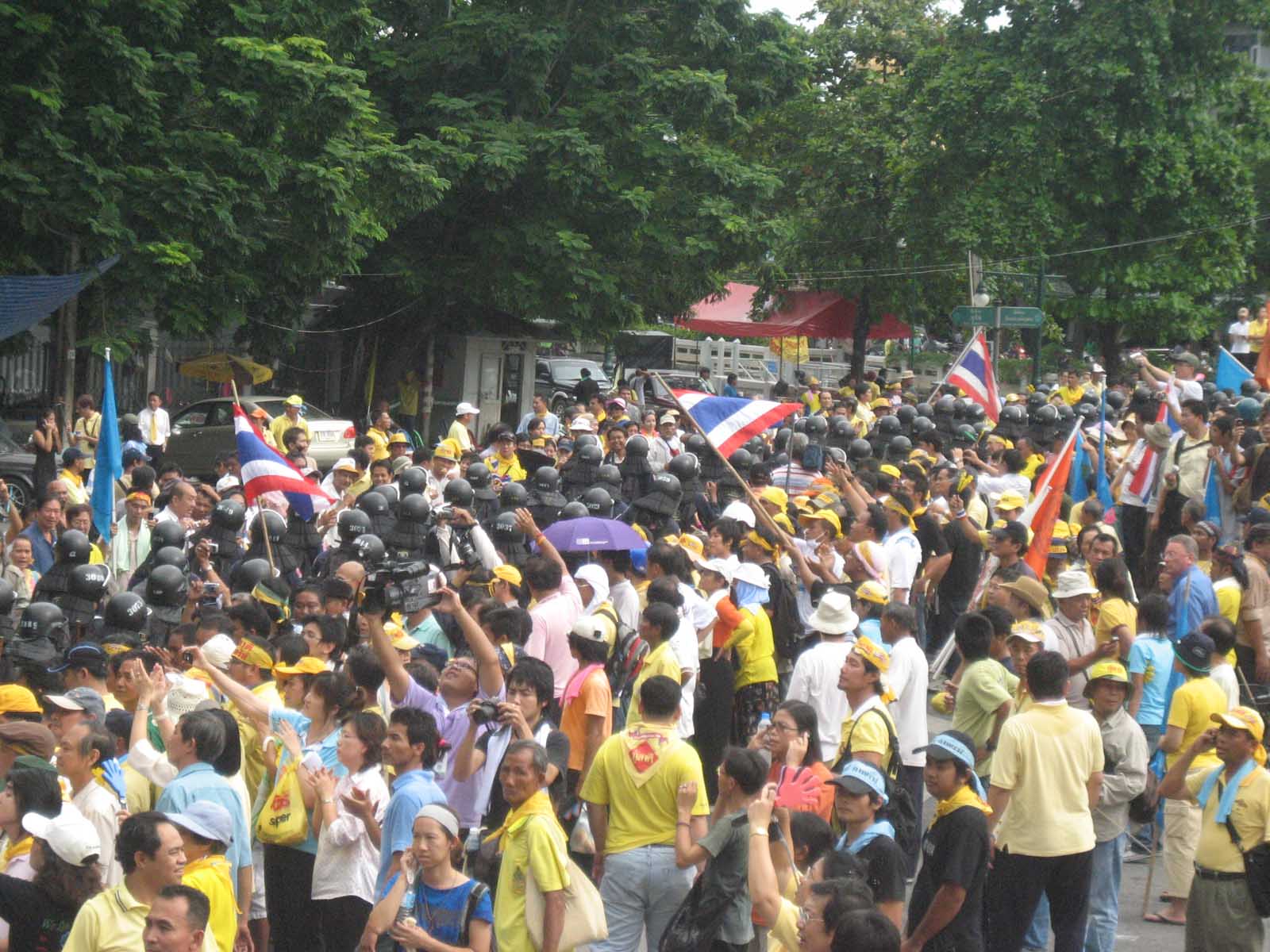Sensory overload
Saturday, October 11th, 2008Phnom Penh is intense in every sense of the word! The traffic, for starters, is insane. Crossing the street in this city makes crossing a street in Bangkok look like child’s play – there are thousands upon thousands of bicycles, motorbikes, trucks, cars, vendors, schoolkids all honking and coming at you from every angle, heading in whichever direction is most convenient at the moment. Roads are (mostly) paved and there are always sidewalks, but 98% of them are rendered useless for pedestrians since they seem to function as storage areas for all sorts of random junk.The only redeeming factor is that they (sometimes) drive on the right side of the road.
There is no order in this chaos (at least, not that I can see), but despite this we decided to rent bicycles rather than hiring a tuktuk for our visit to Choeung Ek, otherwise known as the Killing Fields. The area is located about 15km outside the city, but of course bicycles are rented within the city, leaving us no choice but to jump into the madness! We got started a bit later than I’d hoped for, and things were in full swing.
I was a bit tense, to say the least, but I’ve been in Asia long enough to know how traffic functions: just watch the person in front of you and make your decisions based on them. The person behind you will do the same. Traffic lights are irrelevant – whenever enough vehicles amass, it is go time. The stupidest thing you can do is to make any sort of solitary decision or action – follow the crowd! It’s also important to remember that people don’t stop or yield when turning onto roads, they just go and weave as needed. The same applies for large trucks with boards/metal poles sticking out of the back- if they need to reverse onto a major road, they do. They are big, you are small, and they are in front of you, so adjust accordingly!
In any case, we somehow made it to Choeung Ek in one piece, then spent a sobering hour or so walking around the former mass grave site of the Khmer Rouge. There is a huge memorial, a glass stupa filled with hundreds upon hundreds of skulls, most with axe and bludgeon wounds. We saw the mass graves, some of which had been full of nothing but headless corpses, others nothing but naked women. There was a tree, surrounded by broken bones, that was used for beating babies and children against, along with other horrendeous remnants of the genocide. It was definitely an intense place to visit.
The ride back was even hotter and even crazier, as traffic was at it’s peak and schoolkids were heading home for lunch – by this point I was feeling much more comfortable (just don’t think, don’t look, somehow it works), but after we saw two accidents within 10 seconds of each other I was more than happy to hand the bicycle back to its owner. I’ve seen the state of health clinics in Cambodia and I will (finally) be purchasing that health insurance tonight…
Today we visited the Toul Sleng Museum, or S-21 as it was officially called. This is the former high school that the Khmer Rouge used as a prison and torture facility in the late 1970s, and was an absolutely chilling place to visit. There are three big block buildings, obviously a school. The first building was primarily used for torture and interrogation. Each former classroom has a single iron bed with a chain on it, and they’ve put big photos in each room of the occupant, starved, bloody, tortured and chained to the bed. There is still blood on many of the walls.
The second building housed individuals cells which the soldiers sloppily constructed from wood and metal, partitioning off the classrooms. The cells are tiny boxes with a small window in the door – many still holds chains and other torture devices. It gave me chills to be in there.
Probably the most piercing part of the whole place is where they have displayed a photo of every person that came through the prison; the Khmer Rouge made sure to document each prisoner as they came in, and as they were dying. Because this is such a recent tragedy, there are a large number of good-quality photos to portray the horror. Of the more than 9,000 people that came into S-21, many of them small children, only 4 survived. The museum has displayed signs telling people not to talk, but there’s no reason for them, as I was more or less speechless the entire time.
Overall, we aren’t too impressed with Phnom Penh (we haven’t recovered enough from Bangkok yet!), but it is definitely worth the stop for these two sites. You can read all the books you want and watch all the movies that you can get your hands on, but nothing hits you the way being here does. We’ll hopefully be able to leave on Monday (we’re waiting on our Vietnam visas to be ready) and head northeast,to the the largely undeveloped and much less intense Ratanakiri province.


